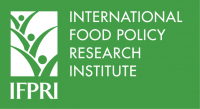
Seasonal agricultural changes can impact rural households’ diets and income, affecting their long-term health and welfare. Changes in diet quality are of particular concern, as diets lower in nutritional diversity have been shown to increase the risk of chronic undernutrition, micronutrient deficiency, and cancer and cardiovascular disease.
Despite the importance of diet quality, little research has been done into just how much seasonal changes impact people’s dietary diversity in developing rural areas. To help fill this gap, the Ethiopia Strategy Support Program (ESSP) used data from 2,300 Ethiopian households to examine how much diets changed, in both quality and quantity, across one year’s agricultural seasons. The study, conducted by Kalle Hirvonen, Alemayehu Seyoum Taffesse, and Ibrahim Worku , included both rural and urban households and used data extending from July 2010 through July 2011.
Due to its dependence on rain-fed agriculture, farming in Ethiopia takes place in seasonal cycles. The main rainy season, or meher, accounts for the majority of crop production and generally extends from October through December, with some variation across regions. Most crop sales occur from December through February. Livestock sales, on the other hand, are more evenly spaced throughout the year. This seasonal production impacts the availability of food, which clearly then has an impact on food prices. The study finds that food prices are generally lowest between November and February – in other words, immediately after the main harvest season. As food stocks decline in the following months, prices start to rise, affecting the amount and type of food consumed.
Interestingly, religion also plays an important role in seasonal changes in food consumption. Orthodox Christians make up 44 percent of Ethiopia’s population and engage in several periods of fasting throughout the year. Lent takes place between February and April and restricts the consumption of dairy, meat, and other animal products; during this time, it is to be expected that Christian households’ dietary diversity will be lower. Ramadan forms the major period of fasting for Ethiopia’s Muslim population (34 percent of the country’s total population); however, as Ramadan only restricts the timing of meals, not the content, this should have less impact on dietary diversity.
According to ESSP’s findings, rural households consume 10 percent fewer calories during the lean season (June-August) than immediately post-harvest. However, during the rest of the year, rural calorie consumption remains fairly stable. Urban calorie consumption is much more volatile, on the other hand, and urban households also see a decrease in the number of calories consumed during the lean season.
In terms of dietary diversity, urban households seem to consume a greater variety of food products throughout the year. Out of a maximum of 12 food groups, urban households consume a mean total of 7.7 groups throughout the year, while rural households consume 6.4. In rural areas, dietary diversity is lowest at the beginning of the lean season (June) and highest after the harvest (February). During the harvest season, 44 percent of rural diets comes from non-cereal sources; this falls to 30 percent in June. Similarly, roots and tubers make up 15-20 percent of total calories consumed by rural households during the harvest season, but this number plummets to 0.2 percent in June.
At the start of the lean season, rural households generally consume a diet made up of cereals and pulses, legumes, and nuts because these products can be stored for long periods of time. The study finds, however, that dietary diversity actually begins to increase in rural areas toward the end of the lean season. One possible explanation for this is that roots and tubers have a shorter growing time and begin to become available in August, the tail-end of the lean season. Thus, while caloric intake is at its lowest during this period, dietary diversity is actually relatively high during the lean season for many rural households.
So what does this mean for rural food security? The fact that dietary diversity can remain high while overall calorie consumption is low suggests that dietary diversity, while important, cannot be relied upon as the sole indicator of a food-secure environment. In places like rural Ethiopia, where both the quality and the quantity of people’s diets change from season to season, food security needs to be measured by a variety of indicators.
